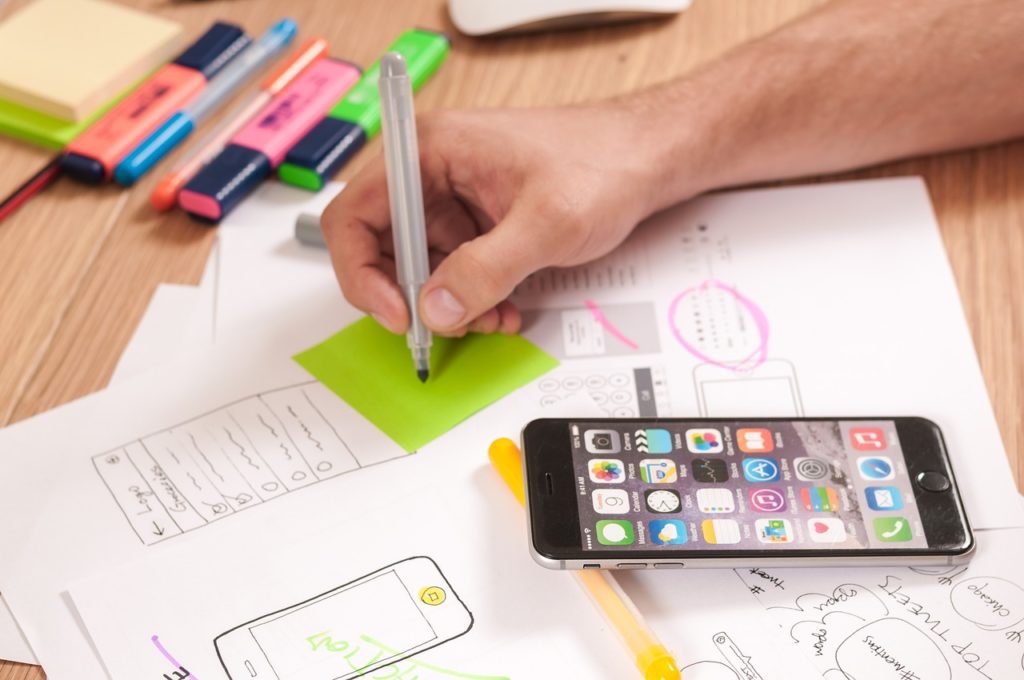In the field of user experience (UX) design, incorporating design thinking methodologies is crucial for creating exceptional user-centered designs.
Design thinking is a problem-solving approach that emphasizes understanding user needs, prototyping solutions, and iterating based on user feedback.

By following these methodologies, UX designers can gain deep insights into user behavior, uncover hidden opportunities, and create meaningful experiences.
In this article, we will explore the top five design thinking methodologies for UX and how they contribute to enhancing user-centered design.
Additionally, we will emphasize the importance of hiring a UX company to leverage these methodologies effectively.
1. Empathize
The first step in design thinking is empathizing with the users. UX designers need to gain a deep understanding of the users’ needs, desires, and pain points.
This involves conducting user research, interviews, and observations to uncover valuable insights.
By empathizing with users, UX designers can design solutions that truly address their needs and create meaningful experiences.
2. Define
Once designers have gained empathy, the next step is to define the problem they aim to solve.
This involves synthesizing the insights gathered during the empathize phase and creating a clear and focused problem statement.
By defining the problem, UX designers can set a clear direction for their design efforts and ensure they are working towards solving the right challenges.
3. Ideate
Ideation is a creative brainstorming phase where UX designers generate a wide range of ideas and potential solutions.
This is a divergent thinking process that encourages designers to think outside the box and explore different possibilities.
Collaborative ideation sessions with stakeholders and cross-functional teams can result in innovative and diverse solutions to the defined problem.
4. Prototype
Prototyping involves creating low-fidelity representations of the design concepts. These prototypes can take various forms, such as paper sketches, interactive wireframes, or clickable prototypes.
Prototyping allows UX designers to quickly iterate and test their ideas with users, gaining valuable feedback and insights early in the design process.
This iterative approach helps in refining and improving the designs based on real user interactions.
5. Test
Testing is a crucial phase in design thinking, where UX designers gather user feedback on the prototypes to validate and refine their designs.
User testing sessions help identify usability issues, gauge user satisfaction, and uncover any areas for improvement.
By involving users in the testing process, designers can make informed design decisions and ensure their solutions meet user needs effectively.
Partnering with Skilled UX Designers
To leverage the benefits of design thinking methodologies effectively, it is important to collaborate with skilled UX designers.
These designers have the expertise to conduct user research, facilitate ideation sessions, create prototypes, and conduct user testing.
Their skills and experience ensure that the design thinking process is implemented seamlessly, resulting in user-centered designs that truly resonate with your target audience.
By partnering with skilled UX designers, you can unlock the full potential of design thinking methodologies.
These designers bring their expertise, creativity, and a deep understanding of user-centric design principles to the table.
They will collaborate closely with you, your stakeholders, and your development team, facilitating a design process that emphasizes empathy, iterative prototyping, and user feedback.
Design thinking methodologies foster a user-centric mindset, encouraging designers to immerse themselves in the users’ world, understand their needs, and develop solutions that truly resonate with them.
By empathizing with users, defining the problem, ideating creative solutions, prototyping and iterating, and testing with real users, designers can create experiences that are intuitive, engaging, and meaningful.
Design thinking methodologies also promote collaboration and cross-functional teamwork. By involving stakeholders from various disciplines, including product managers, developers, marketers, and end-users, designers can gain diverse perspectives and leverage collective intelligence.
This multidisciplinary approach leads to innovative and well-rounded solutions that address the complexities of user needs and business goals.
Furthermore, design thinking methodologies foster an iterative and adaptive approach to design. By embracing prototyping and testing early in the design process, designers can identify and address issues before significant resources are invested.
This iterative feedback loop allows for continuous refinement and improvement, resulting in a more robust and user-friendly final product.
Partnering with skilled UX designers who are experienced in design thinking methodologies is essential for successfully implementing these approaches. Provides access to a pool of talented UX designers who excel in design thinking and can guide you through the entire UX design process.
These designers have a deep understanding of user research, prototyping tools, user testing techniques, and UX best practices. They will collaborate closely with you, adapting design thinking methodologies to your specific project requirements and ensuring that the end result is a user-centered design that exceeds expectations.
Conclusion
In conclusion, incorporating design thinking methodologies in UX design is a powerful way to create exceptional user-centered experiences.
By empathizing with users, defining the problem, ideating, prototyping, and testing, designers can uncover user insights, foster creativity, and refine their designs based on user feedback.
Partnering with skilled UX designers ensures that you have access to professionals who are well-versed in design thinking methodologies and can guide you through the process, resulting in remarkable user experiences. Embrace design thinking in your UX design projects, and empower your designs to make a lasting impact on your users.

